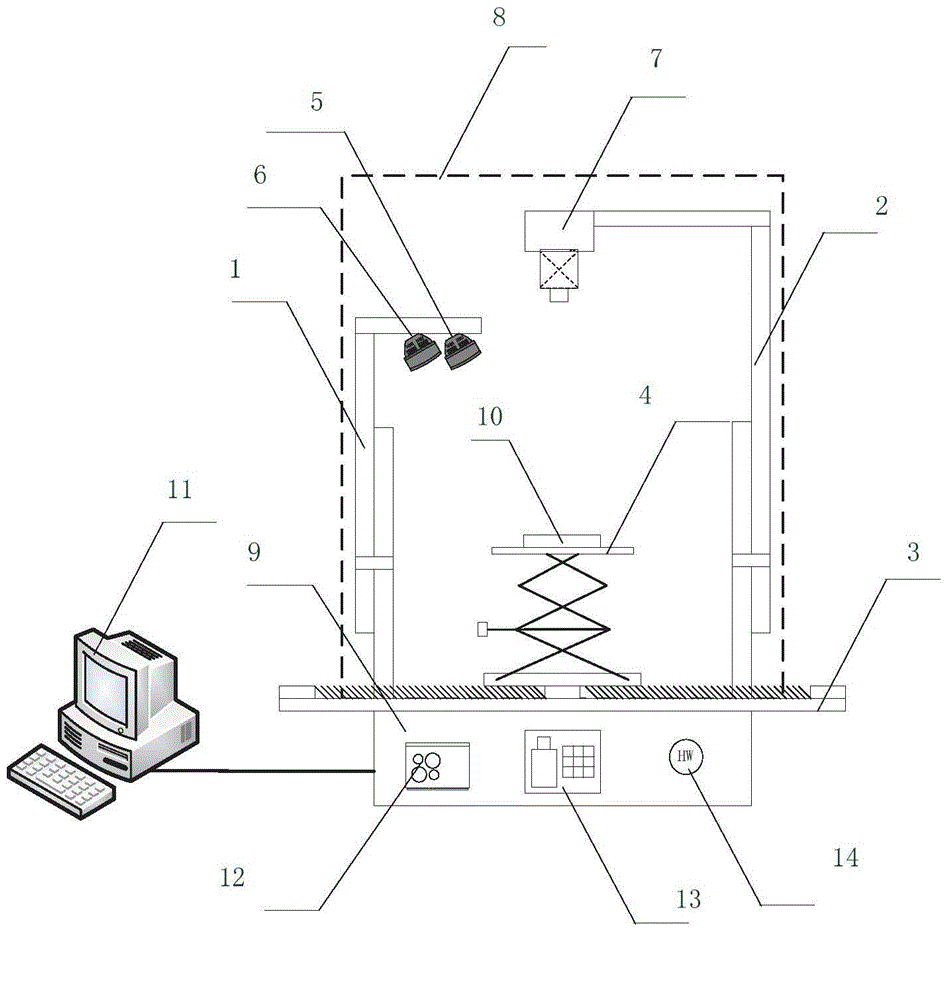Detection apparatus and method for pesticide residues in vegetable based on near infrared, fluorescence and polarization multi-spectrum
A technology for pesticide residue detection and fluorescence spectroscopy, which is applied in the field of non-destructive detection of pesticide residues in agricultural products, can solve the problems of cumbersome processing, unfavorable promotion and application, and time-consuming, so as to enrich light wave information, expand the effective spectral band range, and improve effectiveness. and divisibility effects
- Summary
- Abstract
- Description
- Claims
- Application Information
AI Technical Summary
Problems solved by technology
Method used
Image
Examples
Embodiment Construction
[0032] Theoretical basis of the present invention is:
[0033] (1) Comprehensive consideration of near-infrared spectroscopy and fluorescence spectroscopy to distinguish the types of organophosphorus pesticide residues
[0034] There are many types of organophosphorus pesticides, and the toxicity of each pesticide is different, and the maximum amount of pesticide residues stipulated by the state is also different. Therefore, it is necessary to clarify the types of pesticide residues when testing pesticide residues. As mentioned in the above problems, commonly used organophosphorus pesticides (dichlorvos, trichlorfon, dimethoate, phoxim, fenitrothion, quetiaphos, diazinon, chlorpyrifos, fenthion, methamidophos, Among acephate, phorate, methapon, parathion, and malathion), most of them can be distinguished by near-infrared spectroscopy according to different phosphorus-containing groups, but those with the same phosphorus-containing group Two kinds of pesticides, which cannot b...
PUM
 Login to View More
Login to View More Abstract
Description
Claims
Application Information
 Login to View More
Login to View More - R&D
- Intellectual Property
- Life Sciences
- Materials
- Tech Scout
- Unparalleled Data Quality
- Higher Quality Content
- 60% Fewer Hallucinations
Browse by: Latest US Patents, China's latest patents, Technical Efficacy Thesaurus, Application Domain, Technology Topic, Popular Technical Reports.
© 2025 PatSnap. All rights reserved.Legal|Privacy policy|Modern Slavery Act Transparency Statement|Sitemap|About US| Contact US: help@patsnap.com

